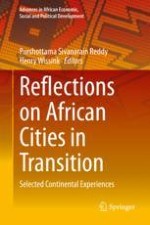This volume describes African cities in transition, and the economic, socio-political, and environmental challenges resulting from rapid post-colonial urbanization. As the African continent continues to transition from urban configurations inherited from colonial influences and history, it faces issues such as urban slum expansion, increased demands for energy and clean water, lack of adequate public transportation, high levels of inequality among different socio-economic population strata, and inadequate urban governance, planning, and policies. African cities in transition need to reconsider current policies and developmental trajectories to facilitate and sustain economic growth and Africa’s strategic repositioning in the world.
Written by an international team of scholars and practitioners, this volume uses case studies to focus on key issues and developmental challenges in selected African cities. Topics include but are not limited to, smart cities, changing notions of democracy, the city’s role in attaining the SDGs, local governance, alternative models for governance and management, corruption, urbanisation and future cities.
